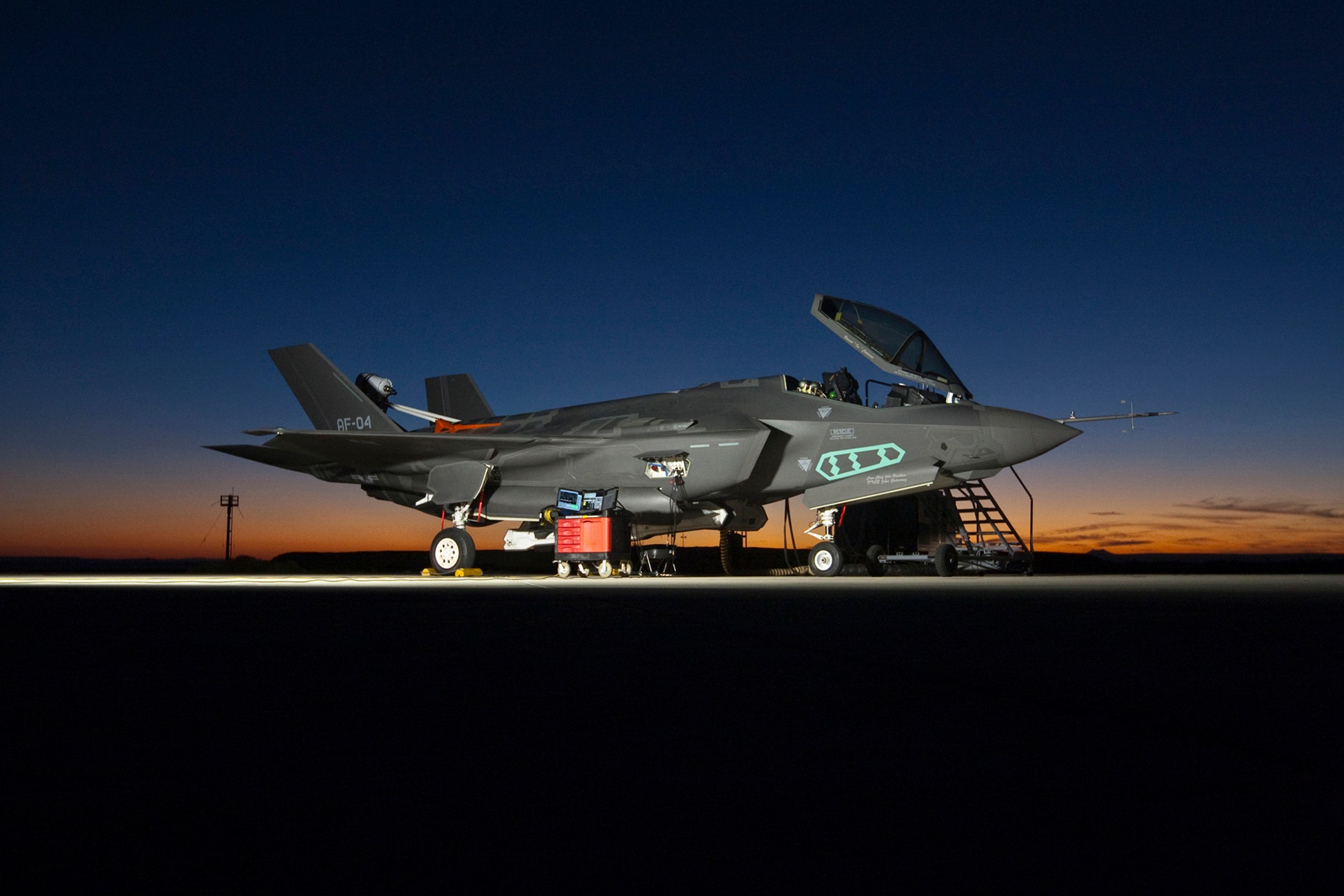The U.S. military's entire fleet of F-35 Joint Strike Fighters has been grounded, owing to a crack in the engine of one jet. This is at least the fourth full or partial stand-down of the F-35, the Pentagon's main future fighter, in just the last two and a half years.
"On Feb. 19, 2013, a routine engine inspection revealed a crack on a low pressure turbine blade of an F135 engine installed in a ... test aircraft at Edwards Air Force Base, California," Kyra Hawn, a program spokeswoman, wrote in a statement.
The damaged blade is being shipped to its manufacturer, Connecticut-based Pratt and Whitney, for a "more thorough evaluation and root cause analysis," Hawn continued. "It is too early to know the fleet-wide impact of this finding, however as a precautionary measure, all F-35 flight operations have been suspended until the investigation is complete."
The F-35 previously had engine-blade problems in 2008.
The grounding affects F-35 testing in Florida, California and New Jersey and initial pilot training in Florida and Arizona. The Pentagon possesses around 100 F-35s of three models: the Air Force's lightweight A-model, the vertical-landing F-35B belonging to the Marine Corps and the Navy's carrier-compatible F-35C. The military plans to buy a total of 2,400 F-35s over the next 30 years at a cost of more than $1 trillion, training and maintenance included.
Unprecedented in scale and ambition, the Lockheed Martin-run F-35 program has been beset by cost overruns, delays and design problems. The Pentagon has steadily downgraded the plane's performance specs. Even so, it struggles to match its required blend of stealth, maneuverability, speed and range.
All F-35s were temporarily grounded in late 2010 and again in 2011 because of a faulty fuel pump. The Marines' F-35Bs briefly stood down last month after an engine malfunctioned -- a failure later tied to a poorly-made fluid line. Every grounding causes testing delays that could bump back the Joint Strike Fighter's frontline debut, currently expected in 2018 or 2019.
The fact that the three Joint Strike Fighter models share a common engine design means a turbine crack in one F-35 could affect all the others. The Pentagon at one time planned to have two different, but swappable, engines for the F-35 -- one each from Pratt and Whitney and rival General Electric. But after a bitter political fight and with the military's recommendation, Congress terminated the alternate engine two years ago on cost grounds.
If it lasts, the current grounding could very well revive that battle.

